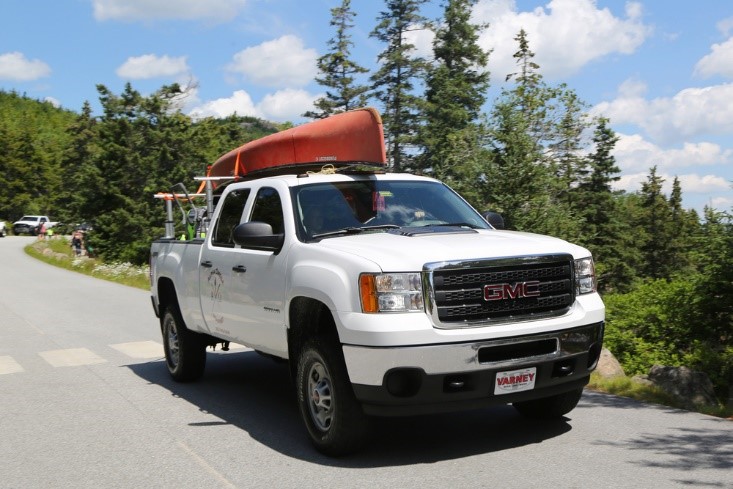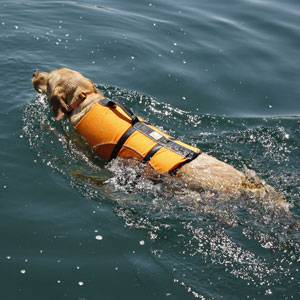If you’re lucky enough to drive a truck, transporting a kayak will be much easier. We go through everything you’ll need to know about how to transport a kayak in a truck here.
Ultimately, a pickup truck is the easiest way to transport your kayak. But there’s still quite a bit that you need to learn if you’re going to know how to transport a kayak in a truck.
Table of Contents
How to Transport a Kayak in a Truck

How to Transport a Kayak in a Truck Bed
This is considered the “no-fuss” method and is probably the most popular method for transporting a kayak in a pickup truck – for a good reason too! Kayakers love the truck bed method because it’s a convenient, simple, and quick solution to how to transport a kayak in a truck.
It can’t get much easier than putting your kayak into the truck bed and securing it in place. Well, there’s more to the process than that – you’ll need to have a truck bed liner, foam blocks to pad your kayak, and a durable rubber mat that will keep your kayak in place.
Cable locks are an excellent way to protect your kayak from anyone trying to steal it. Cable locks can be attached to each kayak handle and an anchor point, which makes them virtually impossible for anyone to try to steal your kayak.
Cable locks also act as a safety precaution because they prevent your kayak from flying off your truck bed when you drive fast on the highway if your rope or tie downs come loose.
Advantages
- This method doesn’t require you to purchase additional equipment or upgrades for your pickup truck.
- It’s an affordable method to help you transport your kayak – especially if you have a limited budget.
- It’s a straightforward and convenient method that is perfect for short drives.
Disadvantages
- You should purchase cable locks or lockable straps as an extra safety and security precaution.
How to Transport a Kayak in a Truck Roof Rack

If you’re looking for a method that will help you transport your kayak while leaving the truck bed empty for additional cargo, investing in a roof rack system is a good idea.
Roof racks are installed on the roof of your truck cab, and they’re a temporary and easy method for transporting multiple kayaks. You don’t need to drill any holes or install any tie-down hooks if you go with this method of transporting a kayak.
The best thing about roof racks is that you can get them in various sizes and shapes, so they can be used on SUVs, trucks, and cars – with some being interchangeable between vehicles – which makes roof racks an excellent investment if you’re an avid kayaker.
When using this method, remember to secure the stern and bow of your kayak and use straps to tie it down to the roof racks to prevent it from falling off or shifting. Stern and bow lines are required with this method because of harsh wind force.
Advantages
- Using a kayak roof rack lets you free up space in the truck bed for other necessary items, such as camping gear and paddling equipment
- You don’t have to remove the tonneau cover to use this method
Disadvantages
- If you’re currently driving a single cab pickup truck that only has front seats, this method won’t work for you
- Transporting a kayak or multiple kayaks can negatively affect your fuel economy
How to Transport a Kayak in a Truck Bed Rack
If you drive a single cab truck and can’t fit your kayak on a roof rack, then a kayak truck rack could be an excellent solution for you.
Load the kayak hull-side down, position it in the middle of the rack, secure it to the bars, and add the stern and bow lines.
Advantages
- Using a kayak truck rack makes unloading and loading your kayak easier than using roof racks
- The weight capacity of truck bed racks is typically much higher than the capacity of a kayak roof rack
Disadvantages
- Kayak truck racks generally require permanent or semi-permanent mounts and aren’t suitable for anyone looking to avoid permanent modifications to their truck
- You can’t use your tonneau cover, which means your truck bed is exposed to the elements
- Compared to other methods on this list, this method can be expensive
How to Transport a Kayak in a Truck Utility Rack

If you’re on the hunt for an easy way to transport a second kayak, going with a truck utility rack is your best option. It’s a combination of a roof rack system and a truck bed rack, which means that you get the best of both worlds.
Lift the kayak onto the rack system and secure it using cam or ratchet straps. What’s great about this method is that you’ll still have room in the truck bed for a second kayak or other equipment!
Advantages
- It’s an excellent solution for transporting touring and tandem kayaks, usually longer than a recreational kayak
- It combines the advantages of a roof rack system and a truck bed rack into one product, which gives you a higher weight capacity and more storage capacity – excellent for multiple kayaks!
- It is an excellent option for long trips because it frees up the truck bed to take additional gear with you or a second kayak
- You can purchase additional attachments to help you carry bikes, ladders, and other equipment with you on your trips
Disadvantages
- This option tends to be noisy and can produce a large amount of vibration at high speeds; any speed over 50 mph will leave you with a high-pitch, loud sound coming from your truck utility rack
- Installation and assembly typically require two people
How to Transport a Kayak in a Truck Bed Extender
As a general rule, your truck’s bed should be long enough to support at least 70 percent of the kayak’s weight. If you can’t squeeze about two-thirds of the kayak’s hull in your truck bed, you’ll need to invest in a truck bed extender.
A truck bed extender will attach to your truck’s hitch receiver and add two or more feet of extra space to your truck bed. You can choose when to attach the truck bed extender and remove it when you don’t need it.
Advantages
- Setup is extremely straightforward
- A truck bed extender is easy to use
- It doesn’t require you to purchase any modifications for your truck if you have a hitch receiver
- This is an affordable solution for transporting your kayak if you have a short truck bed
Disadvantages
- There are laws about how much overhang you can have in your truck bed, so it might not be legal for you to transport your kayak using a truck bed extender
- If you get rear-ended in a crash, your kayak will be in the line of impact
How to Transport a Kayak in a Truck and the Law
Before you start transporting your kayak in your truck, you need to know the regulations and laws surrounding your truck and kayak. The regulations and laws will vary depending on which state you’re in, so you should always check with local authorities before transporting your kayak.
Overhang
According to the United States Department of Transportation (DOT) Federal Size Regulations laws that apply to both passenger and commercial vehicles:
The cargo may overhang the vehicle by 3 feet in the front, 4 feet in the rear, and 4 inches over the truck’s sides.
Some states have additional restrictions, while others have higher overhang restrictions – here are a few examples:
- Washington – Allows a 15-foot rear overhang
- Arizona – Allows a 6-foot rear overhang
- Oregon – Allows a 5-foot rear overhang
- Colorado – Allows a 10-foot rear overhang
Then there are some states, such as Nebraska and Michigan, that don’t have any restrictions.
Safety Flags (Red Flags)
The need to display a safety flag will depend on the kayak’s length and state law – essentially, how far you have an overhang.
Generally, if the overhang is more than 4 feet off the truck’s rear, it must be marked with appropriate safety flags to warn other drivers. The flags should be orange or red and be at least 18 inches.
You’ll have to use two flags if your kayak is over two feet wide and add two lights or red reflectors for nighttime driving.
Unsecured Loads
According to the AAA Foundation for Traffic Safety Research, road debris caused by unsecured loads is a significant cause of accidents, so it shouldn’t come as a surprise that:
Dropping things from your moving vehicle is illegal throughout the United States.
Roof Rack System
Your roof rack system could be considered illegal under US traffic laws. Other than that, it would help if you understood how to secure your kayak correctly and knew that having cargo on the roof of your truck will affect braking performance and driving dynamics.
Keep in mind that most vehicles have a dynamic roof weight rating – which is the amount of weight it can hold while in motion – of 165 pounds. So, it would be best if you looked at your truck’s owner’s manual for exact information about how much weight the roof of your truck can withstand.


